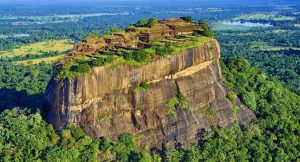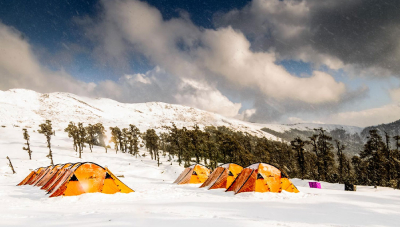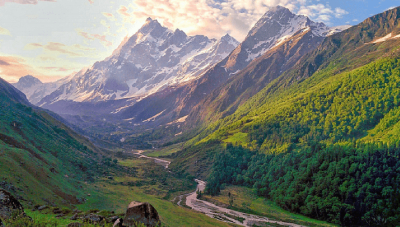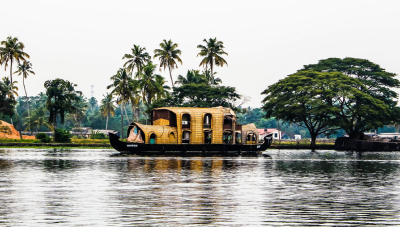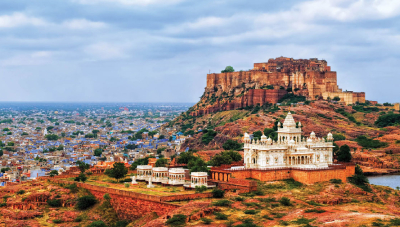“Eco-Tourism in India: A Refreshing Journey through a Highly Diversified Nature”
Ecotourism is an exciting way to explore the natural beauty of our planet while preserving and protecting it for future generations. With ecotourism, you can embark on adventures that will take you off the beaten path and into some of the world’s most incredible natural wonders. Whether you want to trek through dense rainforests, observe rare wildlife in their natural habitats, or discover remote mountain villages, ecotourism offers a sustainable way to travel that is both rewarding and enriching. And, no other place but India comes first in the list when mentioning about these experiences altogether, at a place. India is a country of incredible natural beauty and diverse cultures, making it an ideal destination for ecotourism. From the majestic Himalayan mountains to the lush forests of the Western Ghats and the tranquil backwaters of Kerala, India offers a wealth of ecotourism opportunities that are both sustainable and enriching. Let’s go for a refreshing journey through some of the best ecotourism destinations in India from this article!
List of The Best Ecotourism Destinations in India
| Names of The Places |
Best Time to Visit |
| Kerala Backwaters |
November to February |
| Munnar, Kerala |
December to February |
| Thenmala, Kerala |
December to February |
| Thodupuzha, Kerala |
August to November |
| Eravikulam National Park, Kerala |
April to June |
| Periyar National Park, Kerala |
September to April |
| Kodaikanal, Tamil Nadu |
November to February |
| Coorg, Karnataka |
October to March |
| Nagarhole National Park, Karnataka |
April to May |
| Bandipur National Park, Karnataka |
July to September |
| Galgibaga Beach, Goa |
October to March |
| Tyda, Andhra Pradesh |
October to February |
| Maredumilli, Andhra Pradesh |
November to December |
| Chilika, Odisha |
October to March |
| Sundarbans National Park, West Bengal |
October to March |
| Khangchendzonga Biosphere Reserve, Sikkim |
March to May and September to Mid-December |
| Kaziranga National Park, Assam |
November to February |
| Majuli, Assam |
October to February |
| Mawlynnong, Meghalaya |
June to September |
| Jotsoma Village in Kohima, Nagaland |
October to May |
| Namdapha National Park, Arunachal Pradesh |
October to March |
| Nanda Devi Biosphere Reserve, Uttarakhand |
April to October |
| Great Himalayan National Park, Himachal Pradesh |
April to November |
| Tsomoriri Wetland Conservation Reserve, Ladakh |
June to August |
| Ranthambore National Park, Rajasthan |
October to March |
| Kanha National Park, Madhya Pradesh |
October to March |
| Andaman |
October to May |
| Chail Sanctuary, Solan, Himachal Pradesh |
June to September |
| Gorichen Peak, Tawang, Arunachal Pradesh |
April to June and September |
| Mawphlang Sacred Forest, Meghalaya |
September to May |
| Manas National Park, Assam |
November to April |
| Barsey Rhododendron Sanctuary, Soreng, Sikkim |
April and May |
Also Check Out: Popular India Tour Packages
Kerala Backwaters

The backwaters of Kerala have its own charm and life on it unlike the other destinations in India. Amidst the paddy fields and lush green palm grove these backwaters have its own gentle rhythm hewed out from the rivers which flow down from the Western Ghats to the coast of India. You can enjoy a frolic cruise on the backwaters along the breathtaking vivid contrasts of lush greens and deep blues on the houseboats, known as Kettuvallam which are the cargo boats that once plied in the backwaters to carry heavy cargo such as Rice, Coconut and Spices and also to provide living accommodation for the boatman. These are now changed over to luxurious accommodation for eco friendly travellers.
Activities: Cruising, Canoeing or Kayaking, Village Visits, Watching Cultural Shows, Taking Ayurvedic Treatments and more.
Where to stay: ATDC Houseboats, Alleppey
Nearest Railhead: Ernakulam Junction railway station, Cochin
Nearest Airport: Cochin International Airport
Other Interesting Blogs to Read
Munnar, Kerala
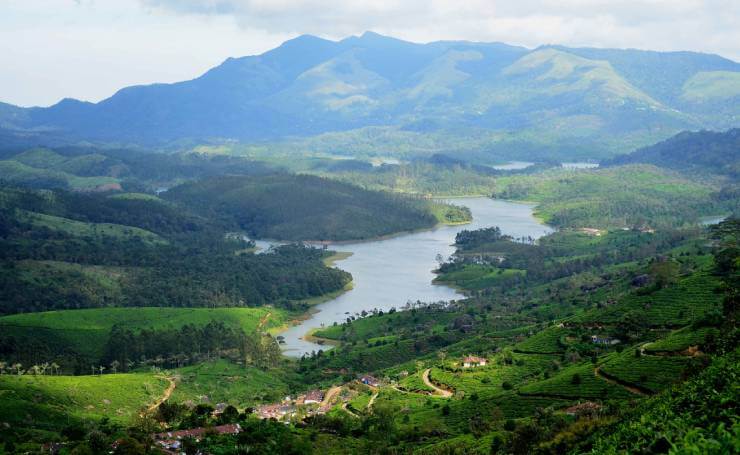
Covered with an extensive layer of forests, grasslands and tea orchards and dotted with several species of exotic flora including the rare Neelakurinji flower, Munnar at an elevation of 1,700 metres is a snug hideout for eco travellers. The small but picture-book hill town in Idukki district in the Western Ghats is home to several protected areas that houses many threatened and endemic species of flora and fauna including the Nilgiri Tahr, Grizzled Giant Squirrel, Nilgiri Wood-pigeon, Elephant, and Gaur amongst the mammals; and Nilgiri Wood Pigeon, Malabar Whistling Thrush, Orange-Crowned Warblers, Nilgiri Pipit, Scarlet Minivet, and Broad-tailed Grassbird amongst the avifauna. If you are travelling to Munnar during the spring and summer seasons you might chance upon the purple-blue hue patches beautifully lying over the lush green bed, that would be a streak of luck though. The gushing streams gutting through the whispering woods and winding lanes cutting through mountains make Munnar one of the popular eco green tourism destinations in India.
Activities: Visiting Tea Plantations, Trekking and Hiking, Wildlife Watching, Waterfalls Visits, Adventure Activities, Exploring Local Markets and more.
Where to stay: Misty Mountain Resort
Nearest Railhead: Ernakulam Junction railway station, Cochin
Nearest Airport: Cochin International Airport
Other Interesting Blogs to Read
Thenmala, Kerala

India’s first planned ecotourism destination, Thenmala in Kollam district is majestically set in the midst of evergreen forests in the lap of the Western Ghats and hosts a wide range of adventure and leisure activities for all kinds of travellers. Its growing popularity among both domestic and international tourists is due to its unique vistas, bio-diversity and functioning. Forest trails and night camping in the middle of the jungle allows you to snuggle into nature, whereas a peep into the traditional tree house that is used by the forest dwellers makes your leap into the wild more exciting. Thenmala also boasts a lake where one can go for boating, a rope bridge, a musical fountain, and offers many activities like rappelling, rock climbing, and biking. The Thenmala Eco-Tourism is divided into three different zones such as the Culture Zone, where one can spree into savouring various Keralian cuisine; Leisure Zone, where one can go for a refreshing walk almost up to the dam; and Adventure Zone, where one can go for activities like hiking, rappelling, biking and rock climbing.
Activities: Nature Walks, Trekking, Boating, Adventure Activities, Butterfly Safari, Canopy Walk, Cycling and more.
Where to stay: Apichayans Cliff Resort
Nearest Railhead: Thiruvananthapuram
Nearest Airport: Thiruvananthapuram Airport
Also Read: Best Places to Visit in Kovalam
Thodupuzha, Kerala

The gateway to the Thommankuthu Waterfalls in Idukki district, Thodupuzha is one of the least explored destinations in India that snug knavishly in the Western Ghats. The seven-step waterfall, which was revealed to the world in 1920 by Mr. Thommachen Kuruvinakunnel, a legendary hunter, is one of the major ecotourism destinations in Kerala. Apart from it, the top of Ilaveezhapoonchira, where you can reach while trekking amidst mesmerising views of the surrounding landscapes, is another wonderful spot to visit. The pleasant surroundings dolled up with an evergreen forest blanketed over the rolling hills and housing several species of avifauna and mammals, squeezed gently in the frame of a perfect eco-tourism holiday.
Activities: Wildlife Spotting, Trekking, Waterfalls Visits, Exploring Towns, Attending Festivals and more.
Where to stay: Vettoms Lakeview Resort
Nearest Railhead: Ernakulam Junction railway station, Cochin
Nearest Airport: Cochin International Airport
Also Read: Water Adventure Sports in Kerala
Eravikulam National Park, Kerala

Home to one of the endangered species, Nilgiri Tahr, the Eravikulam National Park that covers an area of 97 square kilometres and ranges from an altitude of 1,200 metres to 2,700 metres is another popular ecotourism place in Kerala. The park comprises high altitude grasslands and is crisscrossed by several perennial streams that merge to form the tributaries of the Periyar River, Cauvery River, and Chalakudy River. The Lakkam Waterfalls on the course of Pampar River is one of the major attractions in Eravikulam National Park. The park is a haven for wildlife enthusiasts as it houses a wide range of animals, birds, insects, amphibians and plants. Further, one can also indulge in activities like forest trails, trekking and wildlife photography.
Activities: Wildlife Safari, Trekking, Nature Walks, Photography, Camping, Visiting Tea Plantations, Bird Watching and more.
Where to stay: Tea Valley Resort, Munnar
Nearest Railhead: Ernakulam Junction railway station, Cochin
Nearest Airport: Cochin International Airport
Also Read: Popular National Parks & Sanctuaries in India
Periyar National Park, Kerala
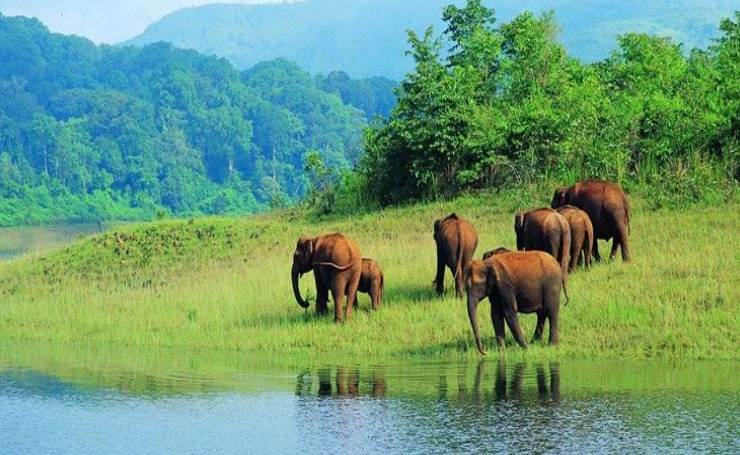
Covering a core area of 350 square kilometres, the Periyar National Park, which is located in the Cardamom Hills and Pandalam Hills of the southern Western Ghats is one of the most visited national parks in South India. As an ecotourism destination, the park is one of the best places to visit as it features sustainable development and conservation. The all-embracing environment turns out to be a paradise for eco-travellers that includes wildlife enthusiasts, botanists and nature photographers. Periyar National Park is notable as an elephant reserve and tiger reserve and also houses several other species of mammals, reptiles, insects, amphibians, and birds. The submerged trees in Periyar Lake are also a treat to the eyes.
Activities: Wildlife Safari, Trekking, Bamboo Rafting, Nature Walks, Boating, Birdwatching and more.
Where to Stay: Bamboo Grove Eco-Lodge
Nearest Railhead: Kottayam
Nearest Airport: Madurai Airport
Also Read: Popular Wildlife Tourism Places in South India
Kodaikanal, Tamil Nadu

One of the popular weekend getaways in South India, Kodaikanal is graciously set in the Palani Hills, between the Parappar and Gundar Valleys, of the eastward spur of Western Ghats at an approximate altitude of 2,130 metres. Kodaikanal was dotted in the map of India as a summer retreat by the British in 1845 and later due to its propitious location gifted by the forests and grasslands topping the hillsides, it bloomed as one of the major eco-places in India. This mighty hill station in South India is endowed with a nature’s basket comprising the montane rainforests that houses some of the endemic flora and fauna, waterfalls, and perennial streams cutting through the valleys.
The Kodaikanal Lake, Bryant Park, Coaker’s Walk, Bear Shola Falls, Silver Cascade, Guna Caves, Dolphin’s Nose, Pillar Rocks, and Berijam Lake are some of the major natural attractions in Kodaikanal. Further, the Palani Wildlife Sanctuary composing a mystical environment tuned up with several waterfalls, namely the Fairy Falls, Neptune Falls, Pambar Falls, Thalaiyar Falls, Alanthoni Falls, Poombarai Falls, Skamba Falls, and more, is no doubt a haven for naturalists and worth exploring.
The proposed Palani Hills Wildlife Sanctuary and National Park, which will be an upgrade and expansion of the Palani Wildlife Sanctuary, covering an approximate area of 737 square kilometres giving shelter to several threatened species and plant life is another best place to visit for eco travellers. The region is mostly inhabited by the Paliyan tribes which are the descendants of the Dravidian people and are famed as traditional nomadic hunter-gatherers, honey hunters and foragers.
Activities: Visiting Kodaikanal Lake, Trekking, Cycling, Visiting Waterfalls, Horse Riding, Visiting Museums, Yoga and Meditation and more.
Where to stay: Black Band Cottages
Nearest Railhead: Kodai Road
Nearest Airport: Madurai Airport
Also Read: Top Tourist Places in Alleppey
Coorg, Karnataka
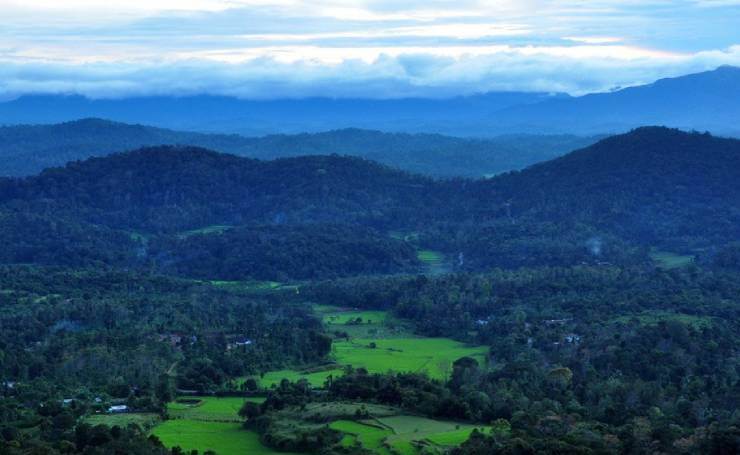
Home to the Kodava tribe, which is one of the indigenous tribes of India, Coorg is definitely a place of complete bliss, delight and peace that is profusely supplied with plant and animal species. Coorg stretches from an elevation of 900 metres to 1,800 metres and is popular for hosting several spice and coffee plantations. Over the years, Coorg, having a vast expanse of elements of nature, has flourished as another eco destination in India, which is located on the western spur of the Western Ghats.
It comprises of three wildlife sanctuaries and one national park that includes the Brahmagiri, Talakaveri, and Pushpagiri Wildlife Sanctuaries, and the Nagarhole National Park that is mostly dotted with bamboo, rosewood, teak, sandalwood, silver oak, and spice plants and housing some of the endangered mammals, reptiles, insects and amphibians. Coorg as an eco-region further constitutes several waterfalls and gushing rivers, thus calving one of the leading water sports in India, river rafting, which can be possible in Barapole and Dubare. Other adventure and leisure activities in Coorg include trekking, hiking, rock climbing, boating and angling.
Activities: Trekking, Coffee Plantation Tours, River Rafting, Wildlife Safari, Camping, Visiting Waterfalls, Visiting Elephant Camps and more.
Where to stay: Alpinia Estate Stay
Nearest Railhead: Mysore
Nearest Airport: Mandakalli Airport, Mysore
Also Read: Best Places to Visit in Coorg
Nagarhole National Park, Karnataka
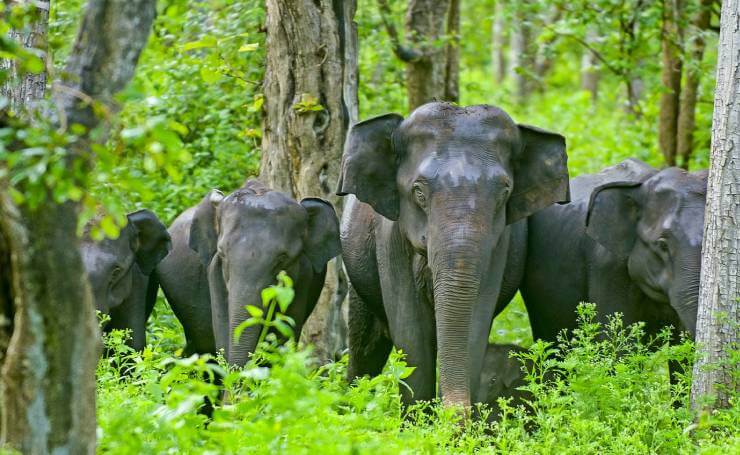
Comprising the districts of Coorg and Mysore and covering an approximate area of 644 square kilometres, the Nagarhole National Park is home to some of the exotic animal species like tiger, leopard, and dhole. Other common mammals and reptiles that are spotted here are chital, sambar, barking deer, jackal, sloth bear, mongoose, hyena, wild boar, squirrels, vine snake, rat snake, bamboo pit viper, Indian rock python, Indian monitor lizard, and common toad. Amongst the avifauna, darters, oriental white ibis, greater grey headed fish eagle, and red headed vulture are some of the ‘near threatened’ ones, whereas the blue winged parakeet, Malabar grey hornbill, and the white bellied treepie remain the major attractions being rare spotted for wildlife enthusiasts. The Nagarhole National Park, which is a part of the Nilgiri Biosphere Reserve, is also one of the Tiger Reserves in India and together it is under consideration of UNESCO World Heritage Committee as a World Heritage Site due it is rich biodiversity.
Activities: Wildlife Safari, Birdwatching, Trekking, Nature Walks, Camping, Sightseeing and more.
Where to stay: Jungle Inn
Nearest Railhead: Mysore
Nearest Airport: Mandakalli Airport, Mysore
Also Read: Popular Nature Weekend Getaways in Karnataka
Bandipur National Park, Karnataka
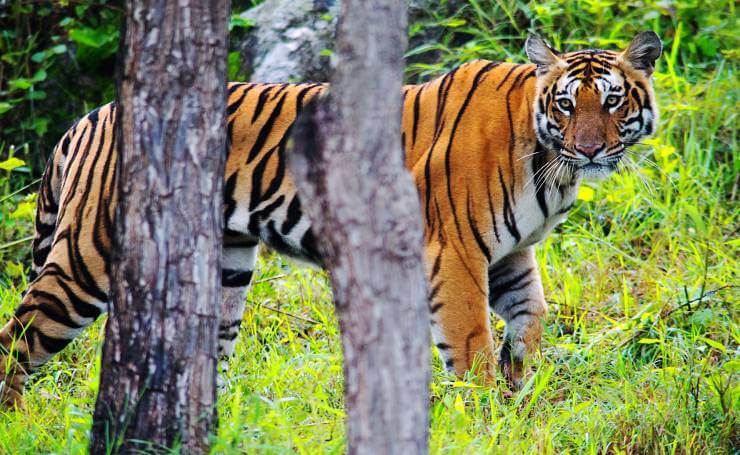
One of the most popular national parks in India and established as a tiger reserve under Project Tiger in 1974, the Bandipur National Park spans over an area of 874 square kilometres and is a part of the Nilgiri Biosphere Reserve. The park comprises of various plant species that include Teak, Rosewood, Sandalwood, Indian-laurel, Indian Kino Tree, Giant Clumping Bamboo, Clumping Bamboo, Indian Gooseberry, Black Myrobalan, Flame of the Forest, Satinwood, Black Cutch, Axlewood, and more. It also gives shelter to a good population of animals including the endangered and vulnerable species like Indian elephants, gaurs, tigers, sloth bears, muggers, Indian rock pythons, four-horned antelopes and dholes and other commonly spotted mammals and reptiles like chital, langurs, squirrels, pythons, vipers, rat snakes, lizards, Indian pond terrapins, and muggers. The Bandipur National Park is also a fairytale world where one can also spot more than 100 colourful butterflies and other insects. With such a rich ecology the park makes for a refreshing escape into the wild for eco-tourists and wildlife photographers.
Activities: Jungle Safaris, Trekking, Bird Watching, Butterfly Spotting, Wildlife Photography, Nature Walks and more.
Where to stay: Bandipur Safari Lodge
Nearest Railhead: Mysore
Nearest Airport: Mandakalli Airport, Mysore
Also Read: Best Places to Visit Near Bandipur National Park
Galgibaga Beach, Goa

Despite being located in one of the busiest tourist hubs in India, the Galgibaga Beach in Goa still remains the cleanest beach in India and is well known for turtle nestling. Being one of the secluded beaches in India that is close to the popular Palolem Beach, the Galgibaga beach is least affected by tourists even during the peak season. Thus, it offers you a pleasant getaway where you can dream of an ideal walk over the solitary silver sand dotted with palm trees. If you are travelling during the winter season then you might be lucky to see some Olive Ridley turtle nests/eggs. Because of this ecological factor, the Galgibaga Beach comes under the purview of the forest department.
Activities: Swimming, Sunbathing, Visiting Nearby Wildlife Sanctuaries, Joining Yoga or Cooking Classes, Nature Walks, Trying out Seafood and more.
Where to stay: The Fern Gardenia Resort, Canacona
Nearest Railhead: Madgaon
Nearest Airport: Dabolim Airport
Also Read: Top Things to Do in Goa
Tyda, Andhra Pradesh

The bountiful nature surrounding this small village of Tyda is virtual and vestal modesty that is secretly set in the Eastern Ghats at an elevation of 700 metres (approximately). It is one of the unexplored places in India and thus springs up as an eco-tourism getaway in India with a rich bed of exotic flora including medicinal and aromatic species. The region is also home to several endemic animals and birds such as the chital, sambar, panther, wolf, wild dog, hyena, sloth bear, gaur, black buck, chinkara, chousingha, and nilgai amongst the mammals and red-chested pod chards, pintails, herons, egrets, migratory ducks, water birds, pelicans, teals, ibises and storks amongst the bird species. The region also facilitates many activities like camping, forest trails and trekking.
Activities: Trekking, Camping, Zip Lining, Rock Climbing, Nature Walks, Visiting Tribal Museum, Visiting Waterfalls and more.
Where to stay: Jungle Bells
Nearest Railhead: Visakhapatnam
Nearest Airport: Visakhapatnam International Airport
Maredumilli, Andhra Pradesh

Another least travelled destination in India, the Maredumilli village in the Eastern Ghats exhibits a rich biodiversity with dense wood and grasslands crisscrossed by several small perennial streams. It is located in the East Godavari District of Andhra Pradesh on Bhadrachalam – Rajahmundry highway and has been developed as an ecotourism destination by the Forest Department. The region is also home to several tribal communities who in support with the Andhra Pradesh Forest Department actively participate in conserving the eco-tourism project.
Maredumilli, located in the southeastern region of India, is a picturesque destination known for its serene ambiance, lush greenery, clear night skies, and meandering river. There are several popular tourist spots in Maredumilli, including Jalatarangini waterfall, Amrutha Dhara waterfall, Manyam viewpoint, Sokuleru viewpoint, Bhupathipalem Reservoir, and Rampa Falls. For adventure enthusiasts, Maredumilli offers plenty of trekking opportunities with various trails leading to nearby areas. Moreover, the region is known for its specialty dish, Bamboo Chicken, which every non-vegetarian must try during their visit to Maredumilli.
Activities: Trekking, Camping, Stargazing, Birdwatching, Waterfalls Visits, Tribal Villages Walks, Exploring Bamboo Craft and more.
Where to stay: Jungle Star Resort
Nearest Railhead: Rajahmundry Railway Station
Nearest Airport: Rajahmundry Airport
Also Read: Top Destinations in India for Solo Female Travelers
Chilika, Odisha
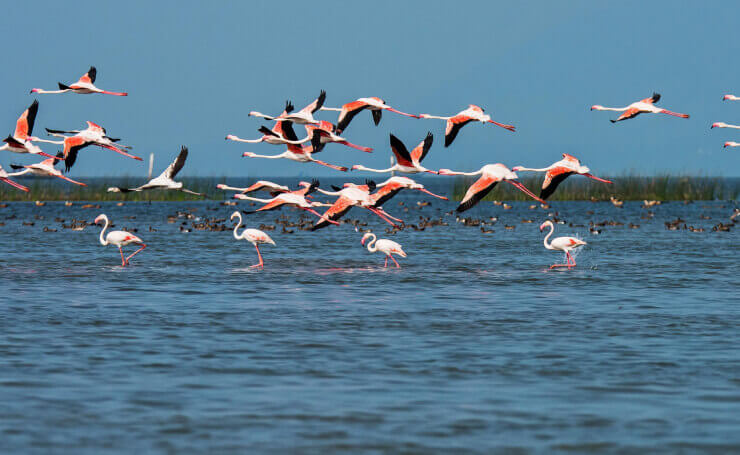
India’s largest coastal lagoon and the world’s second largest, Chilika Lake and its surrounding environment are home to a number of migratory birds and animal and plant species. The area, covering over 3,500 square kilometres, houses the Irrawaddy Dolphins, green sea turtle, dugong, blackbuck, spoon billed sandpiper, limbless skink and fishing cat amongst some of the endemic species. The lake also houses some aqua fauna such as Milk fish, Indo-Pacific tarpon, Ten pounder, Bream, Hilsa, and Mullet and migratory birds like Greater and Lesser Flamingos, Goliath Heron, Grey and Purple herons, Egrets, Spoonbills, Storks and Black-headed Ibis. The list does not end here as you can also spot several rarest bird species here like Asiatic Dowitchers, Dalmatian Pelican, Pallas’s Fish-eagles, migrant Spoon-billed Sandpiper and Spot-billed pelican. The ecosystem is dotted with more than 700 species of flowering plants and is also a shelter to a large number of mammals, reptiles and other amphibians. The region comprises a group of small islands which were declared as a wetland of international importance by the Ramsar Convention and is one of the major ecotourism destinations in India that encourages the wildlife photographers, bird lovers, and naturalists.
Activities: Boating, Dolphin Sightings, Birdwatching, Trying out Seafood, Photography and more.
Where to stay: Panthanivas Barkul
Nearest Railhead: Balugaon
Nearest Airport: Biju Patnaik International Airport, Bhubaneshwar
Also Read: Popular Lakes in India
Sundarbans National Park, West Bengal

Home to the world’s largest mangrove forest, the Sundarbans National Park covers an approximate area of 1,330 square kilometres. It is the royal residence of the Bengal tigers. The region with 54 small deltaic islands, Sundarban is also a shelter to a variety of bird, reptile, invertebrate species and amphibians. Some of the endangered species, other than the Royal Bengal Tiger, which are found in the Sundarbans National Park are the Saltwater Crocodile, River Terrapin, Olive Ridley Turtle, Gangetic dolphin, Ground Turtle, Hawks Bill Turtle and Mangrove horseshoe crab. Among the endemic marine mammals, the Bryde’s whale, Humpback whale, Irrawaddy Dolphins, Ganges River Dolphins, and Humpback Dolphins are sparsely found near the coastal area.
Many conservation projects are being undertaken by the government to protect the rich biodiversity of Sundarbans National Park, which is one of the main reasons for referring to this abode as an ecotourism hub in the country as well as in West Bengal. The park being located at the confluence of many distributaries of the Ganges and Bay of Bengal, thus receives some unique geographical features; mudflats being one of those, which is largely dependent on tidal currents. The Chargheri Char mudflat in the Sundarbans is open for the tourists, and can be visited during low tide.
Activities: Boating, Cruising, Wildlife Spotting, Birdwatching, Fishing, Village Walk, Island Hopping, Photography and more.
Where to stay: Royal Bengal Resort
Nearest Railhead: Canning
Nearest Airport: Netaji Subhash Chandra Bose International Airport, Kolkata
Khangchendzonga Biosphere Reserve, Sikkim

Covering an approximate area of 1,784 square kilometres and ranging from an altitude of about 1,800 metres to 8,500 metres, Khangchendzonga Biosphere Reserve or Khangchendzonga National Park is one of the high-altitude national parks in India and the only national park in Sikkim. It is home to a large variety of alpine vegetation including medicinal plants, animals and birds who live at different altitudes and thus representing a rich ecosystem which also includes many glaciers, waterfalls, lakes and streams. Amongst the mammals the snow leopard, Himalayan Tahr, wild dog, Himalayan black bear, red panda, Himalayan blue sheep, serow, goral and takin are the major attractions for wildlife enthusiasts, and birds like Blood Pheasant, Satyr Tragopan, Osprey, Himalayan Griffon, Lammergeier, Tragopan Pheasant, Green Pigeon, Tibetan Snowcock, Snow Pigeon, Impeyan Pheasant, Asian Emerald Cuckoo, Sunbird and Eagle make it a haven for bird lovers.
The Khangchendzonga Biosphere Reserve also offers a lot of adventure activities like trekking, hiking, and camping, which makes it easier for the travellers to explore the rich biodiversity. The Green Lake Trek and Dzongri Goechala Trek are some of the best alpine treks in Sikkim that pass through the Khangchendzonga Biosphere Reserve.
Activities: Trekking, Hiking, Birdwatching, Photography, Wildlife Spotting, Exploring Villages and more.
Where to stay: Red Palace Hotel and Resort, Yuksom
Nearest Railhead: New Jalpaiguri
Nearest Airport: Bagdogra Airport
Also Read: Popular Trekking Destinations in Sikkim
Kaziranga National Park, Assam

A world heritage site, which is the home to the great One-horned rhinoceros, the Kaziranga National Park, covering an approximate area of 430 square kilometres, is one of the best national parks in North East India that features a highly diversified ecosystem. With the influence of the River Brahmaputra and its tributaries, the national park mostly comprises fertile and alluvial soil and also provides some unique geographical features such as sandbars, beels, and chapories.
It houses a good population of mammals, reptiles, insects, amphibians and birds. Among the animals, tigers, leopards, hispid hare, fox, jackals, bears, and more are sighted and from the bird kingdom, the Great Indian Hornbill and Wreathed Hornbill, Old World babbles, and vultures remain the major attractions. The Kaziranga wildlife sanctuary is also one of the largest homes to reptiles like Reticulated Python, Rock Python, and King Cobra.
Activities: Wildlife Safaris, Village Walks, Tea Plantations Visits, Photography, Birdwatching and more.
Where to stay: Nature Hunt Eco Camp
Nearest Railhead: Guwahati
Nearest Airport: Lokpriya Gopinath Bordoloi International Airport, Guwahati
Also Read: Top Things to Do in Kaziranga
Majuli, Assam

The largest river island in the world, located in the Brahmaputra River in Assam, Majuli is home to several migratory birds. The island is mostly inhabited by the Deoris, Sonowal Kacharis and Mising tribes. Nonetheless, influenced by the Brahmaputra River, the island comprises a unique ecosystem and preserves a rich agricultural base. The region is also home to a large number of amphibians. It’s a large green paradise for nature lovers where locals are also involved in making it one of the best ecotourism destinations in India.
Some of the features found in Majuli which make it one are bamboo cottages, eco-friendly resorts, carbon-free and plastic-free environment, tree plantations and many more. Majuli also offers opportunities for cultural tourism, with several ancient temples located on the island. The Satras, as these religious places are known, are the centres of the unique Neo-Vaishnavite culture of Assam. Visitors can witness traditional dance and music performances and learn about the rich cultural heritage of the island.
Activities: Boating, Exploring Villages, Sightseeing, Birdwatching, Learning about the tribes, Photography and more.
Where to stay: Uttar Kamalabari Satra, Jorhat and La Lolat Eco Camp, Majuli
Nearest Railhead: Jorhat
Nearest Airport: Jorhat Airport
Also Read: Best Places to Visit in Shillong
Mawlynnong, Meghalaya

Located in the East Khasi Hills in Meghalaya, Mawlynnong is considered as Asia’s one of the cleanest villages in the midst of a rich biodiversity. The area surrounding the Mawlynnong village is a basket of abundant natural beauty consisting of an evergreen forest that is a shelter to a large number of animal and bird species, living root bridge, waterfalls and natural caves. The village has been consistently rated as one of the top ecotourism destinations in India, and was even recognized by the Central government as a role model village for the entire country to emulate in 2015. It is known for its picturesque orchards, rushing streams, evergreen surroundings, and swaying palms. It is also the home of the Nohwet Living Root Bridge, a famous icon of Meghalaya. The village has achieved a lot, including a 100 percent literacy rate and a high level of women empowerment.
Activities: Hiking, Trekking, Waterfalls Visits, Village Walks, Exploring the tribes, Sightseeing and more.
Where to stay: Village guesthouses
Nearest Railhead: Guwahati
Nearest Airport: Lokpriya Gopinath Bordoloi International Airport, Guwahati
Jotsoma Village, Kohima, Nagaland

One of the remotest villages of India that is located deep in the indigenous territory of Nagaland, close to its capital, Kohima, the Jotsoma village is considered as one of the best eco-tourism destinations in North East India, which hosts abundance of natural beauty. The village, in the middle of a highly diversified ecosystem, is mostly inhabited by tribal settlements. The region is an ideal location for birding. The village is surrounded by lush green forests and rolling hills, making it a haven for nature lovers. It is also home to the Angami Naga tribe, known for their rich cultural heritage and traditional way of life. Jotsoma Village is committed to promoting sustainable tourism practices and preserving its natural and cultural heritage. The village has set up several eco-friendly accommodations, including homestays and eco-lodges, to provide visitors with a comfortable and sustainable stay.
Activities: Trekking, Hiking, Camping, Exploring Tribal Villages, Trying out local cuisines, Birdwatching, Photography and more.
Where to stay: Hotel Japfu, Kohima
Nearest Railhead: Dimapur
Nearest Airport: Dimapur Airport
Namdapha National Park, Arunachal Pradesh

One of the largest national parks in India that covers an approximate area of over 1,985 square kilometres, the Namdapha National Park is widely known for housing four kinds of felines – the common Indian leopard, snow leopard, clouded leopard and tiger. Nonetheless the vast ecosystem comprising an extensive montane forest dotted with several species of plants, diversified landscape at different altitudes that ranges from an elevation of 500 metre to 4,500 metres, makes it an eco-tourism haven. One of the most unique features of Namdapha National Park is the presence of several tribal communities that have been living in the area for centuries. These tribal communities have a rich cultural heritage and unique way of life and they involve themselves in making this place perfect for interested eco travellers.
Activities: Spotting rare wildlife, Birdwatching, Trekking, Rafting, Watching Cultural Performances, visiting local villages, Learning about the local tribes, and more.
Where to stay: Forest rest houses
Nearest Railhead: Tinsukia Railway Station, Assam
Nearest Airport: Dibrugarh Airport, Assam
Nanda Devi Biosphere Reserve, Uttarakhand

Another UNESCO World Heritage Site because of hosting an extreme and unique biodiversity, the Nanda Devi Biosphere Reserve which constitutes the Valley of Flowers National Park and Nanda Devi National Park, is a travellers’ paradise. Not only because of its high altitude and highly diversified landscape that fascinates trekkers and mountaineers, but the vast expanse of forest, dotted with more than 600 species of flowering plants, medicinal plants and other alpine trees, giving shelter to some of the endemic Himalayan animals and birds, pulls in a large number of wildlife enthusiasts, naturalists, and leisure travellers.
Activities: Trekking, Wildlife Spotting, Flower Spotting, Nature Walks, Photography and more.
Where to stay: GMVN Tourist Bungalow, Joshimath
Nearest Railhead: Kathgodam Railway Station
Nearest Airport: Jolly Grant Airport, Dehradun
Great Himalayan National Park, Himachal Pradesh
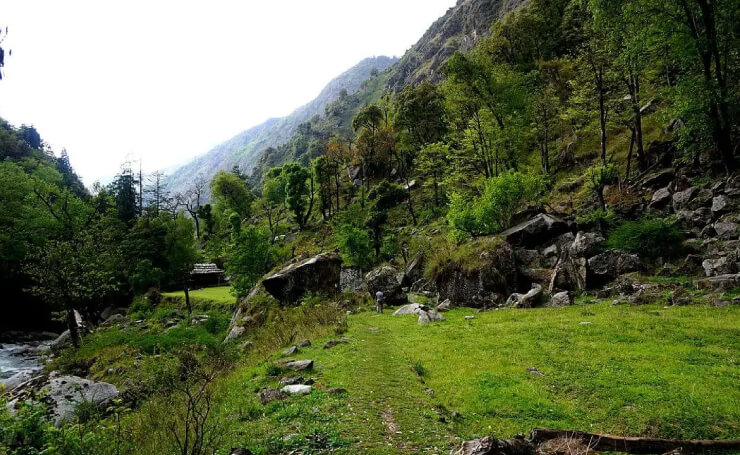
Spreading over an area of 1,170 square kilometres and ranging from an altitude of 1,500 metres to 6,000 metres, the Great Himalayan National Park is home to more than 375 species of fauna and a great diversity of flora. The park, because of its extensive exceptional natural beauty and conservation of biological diversity, with alpine meadows, several streams, lakes, glaciers and snow-capped peaks was declared as a UNESCO World Heritage Site in 2014. Great Himalayan National Park or GHNP is one of the emerging trekking and ecotourism spots in India as it houses several trails throughout the park. The trails are categorised as per their completion time, where some can be completed in a day or two, others take a week to ten days. The park also has a number of conservation programs aimed at preserving the local flora and fauna, as well as supporting the local communities that depend on the park for their livelihoods.
Activities: Trekking, Wildlife Watching, Camping, Birdwatching, Photography, and more.
Where to stay: Community Training & Tourist Center, Sairopa
Nearest Railhead: Joginder Nagar Railway Station
Nearest Airport: Kullu Manali Airport or Bhuntar Airport
Tsomoriri Wetland Conservation Reserve, Ladakh
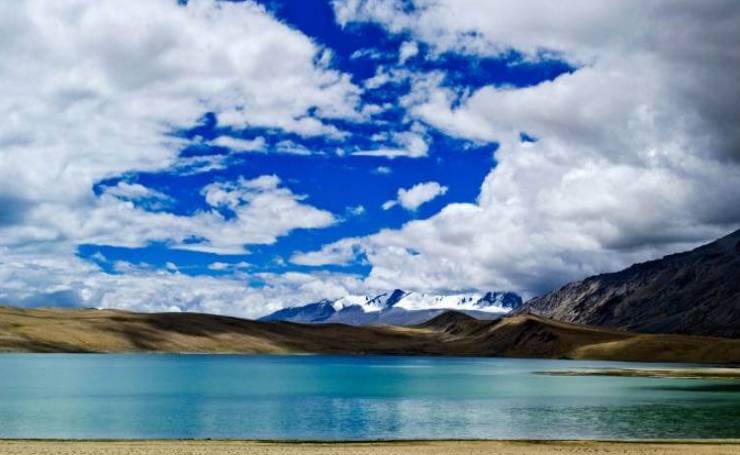
Located at an altitude of 4,595 metres, the Tsomoriri Wetland Conservation Reserve comprises Lake Moriri, which is one of the high-altitude lakes in India. The lake is perched between Ladakh to the north, Zanskar on the west side and Tibet to the east. Its surrounding environment, including the Changthang plateau region, was declared a Wetland Reserve to protect it from adverse effects like plastic and air pollution. The area is home to some of the exotic alpine animal and bird species including the Tibetan Wolf and Snow Leopard among the mammals, and Black-necked Cranes, Bar-headed Geese, Brown-headed Gulls, Great Crested Grebe, Ferruginous Pochard, Black-necked, and Grebe Podiceps nigricollis among the bird species. Ecotourism activities in the region are designed to minimise the negative impact on the environment and promote sustainable tourism practices. The local communities in the region are also actively involved in ecotourism activities and are trained to provide visitors with information about the local environment and culture.
Activities: Birdwatching, Wildlife Watching, Photography, Hiking, Camping, Village Walks and more.
Where to stay: Camps and homestays
Nearest Railhead: NA
Nearest Airport: Kushok Bakula Rimpochee Airport, Leh
Ranthambore National Park, Rajasthan

Popular for its tiger population, the Ranthambore National Park which covers an area of 392 square kilometres is another best ecotourism destination in India having diverse landscapes layered by dry deciduous forest. The terrain of the national park ranges between open bush land and impregnable forests. Besides tigers, Ranthambore National Park is home to a rich collection of plants, animals and bird species including tiger, leopard, nilgai, wild boar, sambar, hyena, sloth bear and chital among the mammal species. You can also spot birds like Greylag Goose, Woodpeckers, Indian Gray Hornbills, Parakeets, Asian Palm Swift, Dove, Sandpipers, Gulls, Terns, Great Crested Grebe, Eagles, Darters, Cormorants, Flamingos, Ibis, Pelicans, Storks, Pittas, Shrikes, Treepies here. There are several ecotourism activities in the national park such as nature and cultural heritage interpretation, guided nature walks, birdwatching, camping in particular areas which promote an appropriate connection with nature.
Activities: Wildlife Safaris, Sightseeing, Historical Places Visits, Birdwatching, Nature Walks, Village Walks and more.
Where to stay: Vanya Vilas
Nearest Railhead: Sawai Madhopur
Nearest Airport: Jaipur International Airport
Also Read: Best Places to Visit in Ranthambore
Kanha National Park, Madhya Pradesh

Stretching over an area of 940 square kilometres and comprising more than 1,000 species of flowering plants, the Kanha National Park is home to a significant population of Royal Bengal Tigers, leopards, sloth bears, Barasinghas and Indian wild dogs. Blessed with a vast and rich biodiversity that is covered with grasslands, sal and bamboo forests, and ravines, Kanha National Park in Madhya Pradesh makes for a refreshing eco-tourism getaway for all travellers. It is an excellent ecotourism destination that offers visitors a unique opportunity to experience India’s rich wildlife and natural beauty while supporting its conservation efforts. The park authorities have taken several measures to promote ecotourism, and visitors are encouraged to adopt responsible tourism practices to ensure that the park’s ecosystem remains intact for future generations.
Activities: Wildlife Safaris, Guided Tours, Village Walks, Nature Walks, Camping, Birdwatching, Photography and more.
Where to stay: Kamp Kamouflage Kanha
Nearest Railhead: Jabalpur
Nearest Airport: Dumna Airport, Jabalpur
Andaman
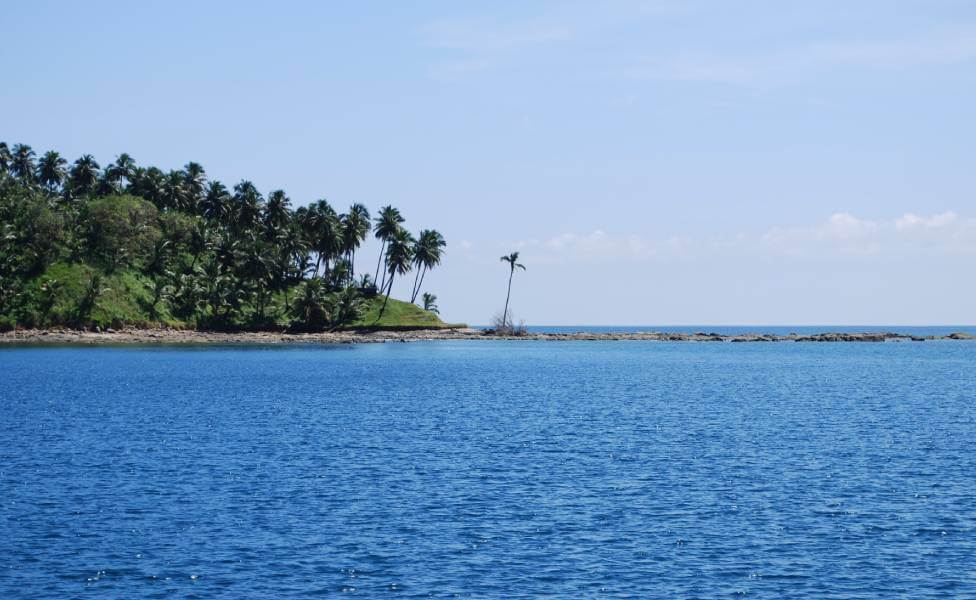
The archipelagos of Andaman in the Bay of Bengal are an invigorated treasure trove of exotic flora bedded by verdant and lush green tropical plants. These isles, midst of the lovat green sea, are the best answer to the virtue of nature and remains a tenacious memory flashed with marvellous beaches fringed by the shimmering turquoise and fabulous coral reefs on one side and the call of a cockatoo and your footprints on the sand on the other. With the canopied forests having an amazing variety of timber, foliage and blooms, Andaman padauk, the yellow hibiscus, the while lily, the pandanus, the exotic array of orchids, mangrove forest, palms and evergreen creepers are to name but a few of the 650 species of plant life found here, together which can make your vacation an exotic one. Enjoy the ocean cruise, snorkelling, scuba diving, water skiing and several other activities while you rove these islands.
Activities: Water Sports Activities, Beach Hopping, Nature Walks, Sunset Watching, Cruising, and more.
Where to stay: Barefoot at Havelock
Nearest Railhead: NA
Nearest Airport: Veer Savarkar International Airport, Port Blair
Chail Sanctuary, Himachal Pradesh

Chail Sanctuary, located in the state of Himachal Pradesh in India, is a popular ecotourism destination known for its scenic beauty and rich biodiversity. The sanctuary covers an area of approximately 110 square kilometres and is home to a variety of flora and fauna. The sanctuary is known for its dense forests of pine and deodar trees, which provide a habitat for a variety of wildlife, including sambar, barking deer, wild boar, langurs, and Himalayan black bears. Visitors can also spot a variety of birds, including pheasants, partridges, and eagles.
Activities: Wildlife Spotting, Hiking, Camping, Birdwatching, Nature Walks, Photography and more.
Where to stay: Pahadi Zayka Homestay
Nearest Railhead: Kalka Railway Station
Nearest Airport: Jubbarhatti Airport, Shimla
Gorichen Peak, Tawang, Arunachal Pradesh

The highest peak of Arunachal Pradesh with a height of 6,858 metres, Gorichen Peak, also known as the Sa-Nga-Phu or Mount Gorichen, is an ecotourism destination due to its unique natural beauty and biodiversity. Located in Tawang District, it is surrounded by dense forests, alpine meadows, and snow-capped mountains. Visitors to Gorichen Peak can also enjoy a range of ecotourism activities, such as trekking, camping, and bird-watching, while at the same time minimising their impact on the environment. The local communities in the area have also embraced ecotourism as a means of sustainable development and are actively involved in the preservation and conservation of the natural resources in the region.
Activities: Trekking, Camping and Nature Walks.
Where to stay: Camps
Nearest Railhead: Guwahati
Nearest Airport: Lokapriya Gopinath Bordoloi International Airport, Guwahati
Mawphlang Sacred Forest, Meghalaya

Located in the East Khasi Hills district of Meghalaya, India, known as ‘Nature’s Museum,’ the forest is considered sacred by the indigenous Khasi people who have been protecting it for generations. Protected by the people of the Lyngdoh clan, Mawphlang Sacred Grove is believed to be the residence of Labasa, Khasi deity who protects the people and the village from any kind of distress. The Mawphlang Sacred Forest is an ecotourism destination in India due to its unique ecological and cultural significance. The forest is home to a wide variety of plant and animal species, including many rare and endemic ones. Visitors can explore the forest on guided tours and learn about the traditional ecological knowledge of the Khasi people, who have developed sustainable management practices to protect the forest. The forest is categorised into three sections and only the first and second can be visited with a guide.
Activities: Forest Walks, Guided Tours, Plants Spotting, Exploring Villages, Hiking, Learning about Tribal Communities, Trying out Tribal Food and more.
Where to stay: Mawphlang John’s Homestay
Nearest Railhead: Guwahati
Nearest Airport: Umroi Airport or Shillong Airport
Manas National Park, Assam
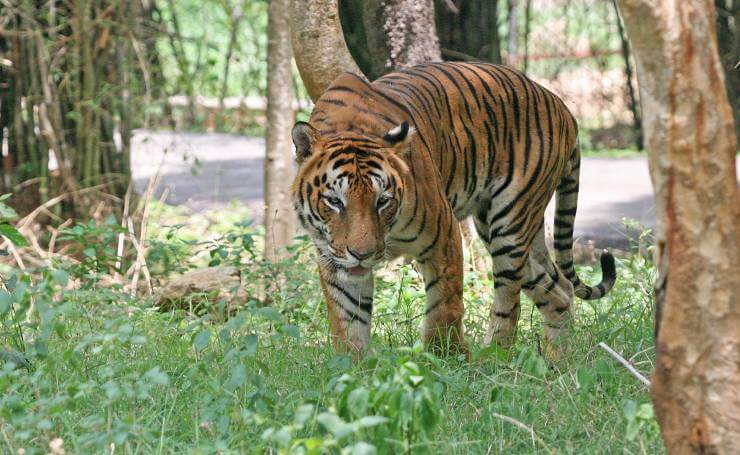
Manas National Park is a stunning ecotourism destination located in the northeastern state of Assam, India. This park is known for its vast biodiversity, including rare and endangered species of flora and fauna. It covers an area of approximately 500 square kilometres and is located on the foothills of the eastern Himalayas. The park is home to several species of mammals, including the Indian rhinoceros, Asian elephant, Bengal tiger, clouded leopard, and the Indian pangolin. It is also a birdwatcher’s paradise, with over 450 species of birds recorded here. One of the unique features of Manas National Park is its landscape, which consists of dense forests, grasslands, and wetlands. The park is home to the Manas River, which flows through its heart and adds to the park’s beauty.
Activities: Boating, Wildlife Sightings, Nature Walks, Sunset Watching, Birdwatching, Photography, Sightseeing and more.
Where to stay: Eagle Nest Eco Retreat, Hornbill Eco Camp
Nearest Railhead: Barpeta Road Railway Station
Nearest Airport: Lokapriya Gopinath Bordoloi Guwahati Airport
Barsey Rhododendron Sanctuary, Soreng, Sikkim

Barsey Rhododendron Sanctuary is a breathtakingly beautiful natural wonderland nestled in the heart of Sikkim, India. This sanctuary is a perfect destination for nature lovers and adventure enthusiasts who are looking for an unforgettable ecotourism experience. One of the main attractions of the sanctuary is its stunning rhododendron blooms, which carpet the hillsides in a riot of colours during the months of April and May. The sanctuary is home to over 40 species of rhododendrons, including the rare Rhododendron niveum, which is found only in this region. The Barsey Rhododendron Sanctuary is also a popular trekking destination, with several well-marked trails winding through the forests and hills. The most popular trek is the Barsey Rhododendron Trek, which takes you through some of the most stunning rhododendron forests in the region.
Activities: Hiking, Trekking, Spotting Flowers, Nature Walks, Village Walks, Photography, Camping and more.
Where to stay: Okhrey Homestay, Barsey Homestay, Hilley Homestay and Bhareng Homestay
Nearest Railhead: New Jalpaiguri Railway Station
Nearest Airport: Bagdogra Airport
India offers a vast array of eco-tourism destinations that are perfect for travellers seeking to explore the country’s natural beauty while minimising their environmental impact. We have tried to provide a list of the best ecotourism destinations in India which span across the Himalayan landscapes to the coastal part of the country. By choosing to visit these destinations, travellers can not only have an unforgettable experience but also contribute to the preservation of India’s fragile ecosystems and support the livelihoods of local communities. If you have any experience of visiting any of these places, share your travel memories in the comment section below.
About the author
Brought up from the cultural capital of India, Kolkata, Swairik Das is a passionate traveller who seeks to travel and explore the length and breadth of the country. He is also a dedicated travel writer, blogger and photographer who by heart is also an adventure freak. His focus is mostly into exploring and writing on trekking, jungle safaris and several adventure activities; religion, festival, heritage, people and cuisine.

 +91-9212777225
+91-9212777225 Plan Your trip
Plan Your trip










































